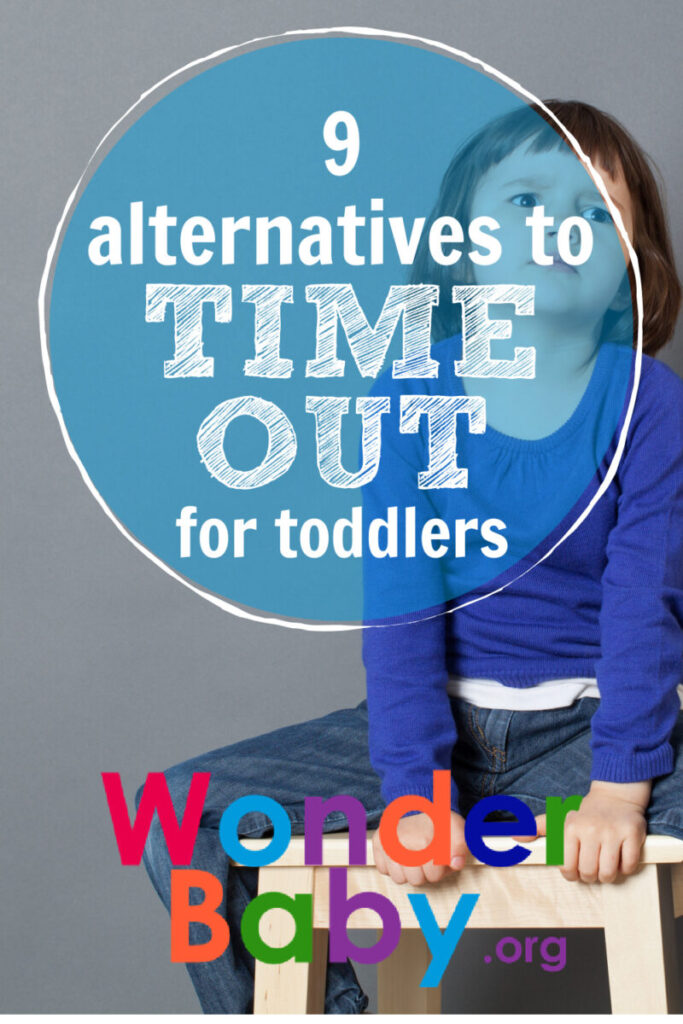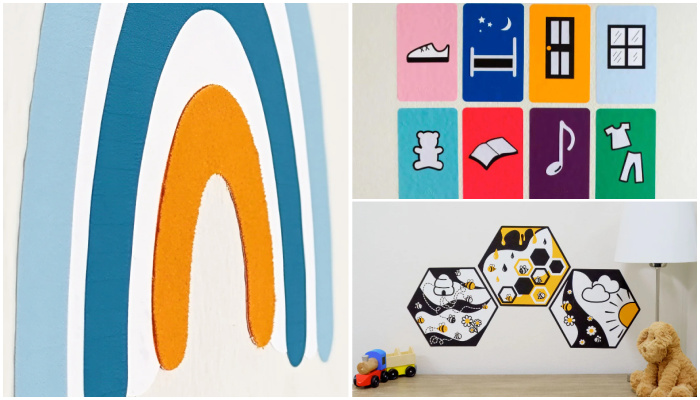9 Alternatives to Time Out for Toddlers

- The fact is: Children don’t misbehave—they behave like children.
- Time outs originated as a type of punishment, not discipline.
- Some alternatives to time out include: offering a do-over, suggesting a time in, and taking a break.
- Alternatives to time out can teach children that their self-worth doesn’t depend on their emotions or the mistakes they make.
- If you’re feeling like your child needs a time out, there’s a good chance you need one as well. Step back, breath, and re-assess the situation.
Time out might have worked the first few times. Now your clever toddler may have turned “discipline” into a game. Even the empty time out chair seems to be mocking you. Rest assured, there are alternatives to time out.
The alternatives to time outs focus on connection—where true discipline, communication, and learning can take place. They also include positive discipline techniques that involve life skills your toddler can learn now.
Free from punishment, your child will have the opportunity to not only share her feelings and problems, but also listen to those of others. Time out alternatives give you a chance to explore positive parenting skills and problem solve difficult situations alongside your child. Yes, it’s actually possible to discipline your child while still keeping the parent-child relationship intact!
Stop yelling “time out,” and start teaching your child self-regulation skills she can use in the long run. Your future self and child thank you in advance.
How is a Time Out Used for Discipline?
When a time out is used for discipline, you guide your child’s behavior in a positive way. You connect with your child and set limits by pointing out natural consequences (i.e. “I can’t let you scream in here. It hurts everyone’s ears.”)
The following events occur when you use a time out for discipline: You provide time and a quiet space for your child. You remain calm as you stay with and listen to her. You gently guide her toward more favorable behavior.
When a time out is used for punishment, however, it looks quite different:
- You’re angry and you most likely yelled “time out” before forcing your child to stay in one spot.
- You walk away from your child during time out.
- You ignore her.
- Your child has a designated chair or space in the house where you expect her to go when she’s been “bad” or is “not listening.”
Why a Time Out is Not Always an Effective Discipline
Some parents might use time out assuming they are disciplining their children. But more often than not, it’s used as punishment.
Here are some reasons why a time out isn’t working:
- A time out has the danger of sending the wrong message to your child. It tells your child that you withhold your love when she does something that you don’t approve of. It also tells your child that she’s “bad” or “naughty.”
- Punishments tend to escalate behavior, creating additional behavior issues. (For example, some children may start lying to avoid having a time out.)
- Time outs create distance from the situation. You may lose out on the opportunity to teach your child and equip them with the tools to handle herself in similar future situations.
- Time outs create resentment in children. Over time, they may become so resentful that they stop communicating with their parents.
- Time outs can become a power struggle, especially if you have a strong-willed toddler.

9 Alternatives to Time Out for Toddlers
1. Do a basic needs check.
Children tend to act out when their basic needs have not been met. It might be easy to forget to check their basic needs when your child’s emotions are running high. Go through this list, and ask yourself these questions:
- Is she sleepy?
- Is she hungry?
- Is she overstimulated?
- Does she need your attention or a hug?
Imposing a timeout on your child if she just needs to sleep or a change in scenery can confuse your child and even damage your relationship with her.
2. Call a time in.
Whereas a time out pushes your child away, a time in brings your child closer to you. Allow your child to feel your calm presence. Allow her to hear your non-judgmental observations about her behavior, such as, “It looks like you’re having a difficult time.”
3. Suggest a do-over.
Children—especially young children—live in the moment. That means they’re most likely going to act on impulse. Mistakes, messes, and mayhem are bound to happen with this sort of lifestyle. That’s how children learn.
Avoid making a judgmental comment, and let your child try again. Keep your hopes high, but also keep your expectations in check. When disciplining young children, allow plenty of mistakes and loads of do-overs. It would be a mistake as a parent to leave no room for mistakes for your child (or for yourself).
4. Take a break.
Parenting is challenging. On a bad day, your child’s behavior is magnified! You’re allowed to give yourself a break. You’re even allowed to have your own calming corner. If you remain in a stressful situation, you may start yelling and say something hurtful.
The next time your blood pressure starts to rise due to your child’s behavior, make your exit to a different location of your home. Just be sure to tell your child first. Ensure that she’s in a safe place and say something like, “I’m going to leave the room to calm down. Let’s talk after I take a little break.”
The beauty of taking breaks for yourself is that you model for your child the value of stepping back and calming down. It can also teach your child self-awareness. When she feels anger or fear, she is empowered to take control of her feelings and find calm. The next time she has the urge to throw toys at other children, you just may witness your child choose appropriate behavior after calming herself down.
5. Teach through play.
When kids are overcome by strong emotions, they may not understand their feelings and act out. Give your child the opportunity to calm down and then model appropriate behavior for her. For example, you can play a game that involves taking turns. You can also demonstrate sharing and taking deep breaths when something doesn’t go as planned.
6. Praise, praise, praise!
Praise your child, loudly and proudly, whenever you catch her engaging in appropriate behavior. Maybe your child shared a toy—she deserves praise. She may have waited her turn. She deserves praise! Your positive attention and praise serve as a reward. Your child needs to know that she’s “good” and can do things “right.”
7. Say yes.
Once you go down the road of saying “no,” your child is bound to protest or rebel (or both). Unless your child is in grave physical danger, ask yourself: “Why not?”
On the other hand, if your toddler is telling you “no” to eating food or wearing a jacket, say “yes” to the consequences. She will feel hungry, and she will feel cold. The discomfort she experienced from her “no” may teach her to say “yes” next time. Don’t be afraid of natural consequences.
8. Let her feel her feelings.
If your child is throwing a tantrum, she is experiencing an overload of stimuli. Empathize by letting her “get it all out” while making sure she doesn’t hurt herself.
When she calms down, talk to her in a gentle voice. You could try naming her emotions by saying, “You’re feeling so disappointed right now.” Assure her that it’s also okay to feel two feelings simultaneously, such as irritated and sad.
9. Ask questions.
Sometimes, it may seem like your child is behaving inappropriately. It could be that she’s figuring something out. You may not understand the situation yet, so avoid assuming that your child is up to something “bad.” Instead, ask her, “What are you up to?”
Should You Ever Use Time Out?
If you’re set on using time out—as discipline, not punishment—it can be helpful to hold family meetings. Together, you can talk about calming techniques, setting reasonable boundaries for the toddler, and practicing positive discipline.
As you share your feelings and emotions with your family, it will deepen your connection and encourage open communication. Your older kids will also get an idea of the challenges of being a parent.

Related Posts

Parenting
Sensory Wall Art: 5 Tips to Create a Room Your Blind or Low-Vision Child Will Love
Even if your child can’t see their surroundings, personalizing and decorating their room with thoughtful, sensory-friendly design can make a big difference in their confidence, independence, and joy.

Parenting
4 Tips to Manage Twins Alone as a Single Parent
Taking care of twins alone as a single parent can feel overwhelming. Learn practical ways to help lighten the load.

Behavior
Understanding Intermittent Explosive Disorder in Children
Are you worried about your child’s unexpected aggression and explosive behaviors? Learn how to support a child with intermittent explosive disorder.